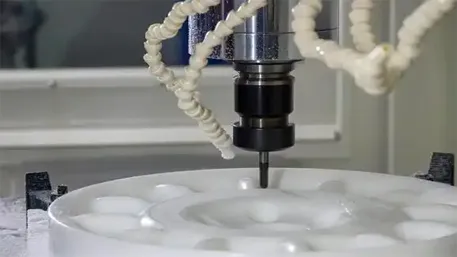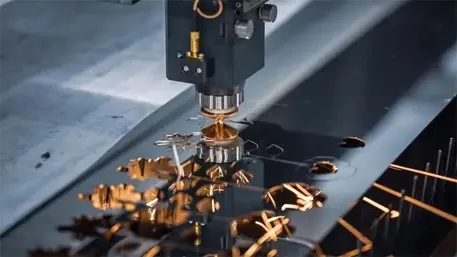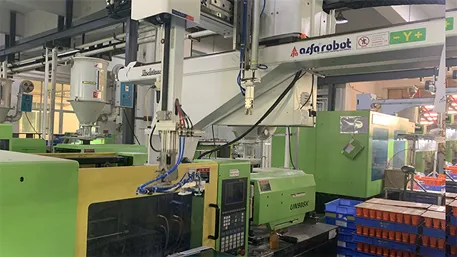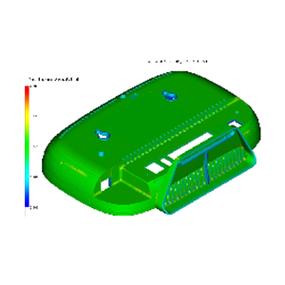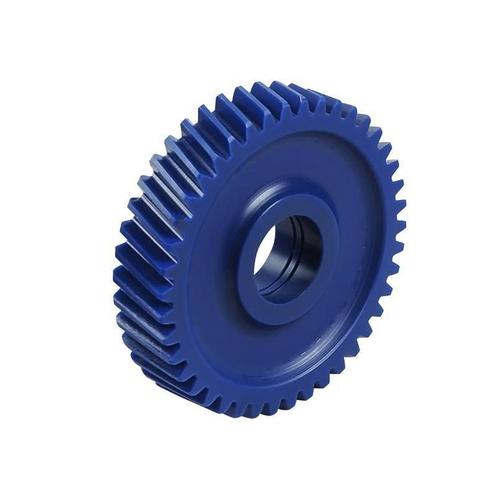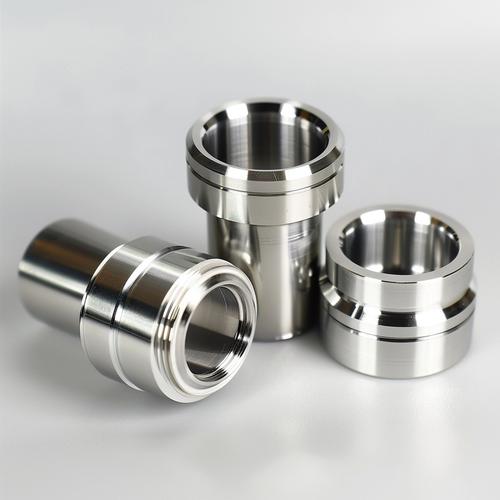A slide core mold is a vital component in mold manufacturing, used in injection molding, die-casting, and other molding processes to achieve complex product structures and ejection through the sliding action of sliders. The design, manufacturing, and processing accuracy of slide core molds directly impact product quality and production efficiency.

Slide Core Mold Production Process
- Review Drawings and Material Preparation: Based on customer-provided product drawings, conduct detailed process analysis and material preparation.
- Processing Preparation: Include the setup of equipment and tooling required for rough and finish machining of mold components.
- Mold Base Processing: Involves the machining and assembly of key parts such as A/B plates, faceplates, ejector pin retaining plates, and base plates.
- Core Processing: Includes rough grinding, milling, fitting, CNC machining, heat treatment, and finish grinding of the mold core to ensure precision and surface quality.
- Slider Processing: The slider, the core component of the slide core mold, undergoes rough milling, finish grinding, bevel processing, drilling for cooling channels and inclined guide pillar holes, etc.
- Mold Component Processing: Includes the machining of components such as clamping blocks, distribution cones, sprue bushings, and inserts.
- Inspection and Assembly: Conduct quality inspections on all mold components before assembly and debugging.
- Mold Trial and Adjustment: After mold assembly, conduct mold trials and adjustments to ensure it can produce qualified products.
- Production Release: After mold trials, the mold is officially released for production.
Slide Core Mold Machining Steps
- Rough Machining of Slider: Use a milling machine to perform six-sided rough machining on the slider to ensure basic accuracy of dimensions and shape.
- Finish Grinding of Slider: Conduct finish grinding on the slider to ensure dimensional accuracy and surface finish meet requirements.
- Bevel Processing: According to design specifications, process the bevel of the slider to ensure it aligns with the clamping block.
- Drilling Cooling Channels and Inclined Guide Pillar Holes: Drill cooling holes and inclined guide pillar holes in the slider to ensure effective cooling and accurate slider movement.
- Assembly and Debugging: Assemble the slider with other mold components and conduct debugging to ensure the mold functions properly.
Custom Slide Core Mold Services
- Needs Communication: Engage in detailed communication with customers to understand product structure, dimensions, materials, and production requirements.
- Design Proposal: Based on customer needs, design the mold scheme, including slider design, mold base selection, and core processing methods.
- Quotation and Contract: Provide a detailed quotation and sign a mold manufacturing contract with the customer.
- Mold Manufacturing: Manufacture and process the mold according to contract specifications.
- Mold Trial and Acceptance: After mold manufacturing, conduct mold trials and acceptance to ensure it can produce qualified products.
- After-Sales Service: Provide mold maintenance, repair, and upgrade services to ensure long-term stable operation.
Materials for Slide Core Mold Manufacturing
Materials:
- Mold Steel: Such as Cr12, Cr12MoV, 5CrNiMo, used for manufacturing critical components like cores and sliders.
- Wear-Resistant Materials: Such as tin bronze, used for manufacturing wear-resistant blocks and guide blocks.
Characteristics:
- High Strength: Mold steel has high strength, capable of withstanding high pressure and temperature during injection molding or die-casting.
- High Hardness: After heat treatment, the hardness of mold steel significantly increases, resisting wear and deformation.
- Excellent Wear Resistance: Wear-resistant materials like tin bronze exhibit good wear resistance, extending mold lifespan.
- Good Machinability: Mold steel and wear-resistant materials are easily machined, facilitating cutting, grinding, and other processing operations.
- Corrosion Resistance: Some mold steels, like stainless steel, are corrosion-resistant, maintaining stable performance in humid or corrosive environments.
Materials Processable by Slide Core Molds
Materials:
- Plastics: Such as ABS, PP, PE, PVC, etc.
- Metals: Such as aluminum alloy, zinc alloy, magnesium alloy, etc.
Characteristics:
- Good Plasticity: Plastic materials have good plasticity, allowing for complex shapes through injection molding.
- Low Density: Plastic materials have low density, reducing product weight and production costs.
- Strong Corrosion Resistance: Some plastic materials, like PVC, are corrosion-resistant, maintaining stable performance in corrosive environments.
- High Strength: Metal materials like aluminum alloy and zinc alloy have high strength, capable of bearing significant loads and impacts.
- Good Thermal Conductivity: Metal materials have good thermal conductivity, enabling rapid heat dissipation and improving production efficiency.
Slide Core Mold Processing Techniques
- Rough Machining: Use milling machines, lathes, and other equipment for rough machining of mold components to remove excess material and form basic shapes.
- Finish Machining: Use CNC machining centers, grinding machines, and other equipment for high-precision and complex shape machining of mold components.
- Heat Treatment: Conduct heat treatment on mold steel to increase hardness and wear resistance, extending mold lifespan.
- Assembly and Debugging: Assemble mold components and conduct debugging to ensure the mold functions properly.
- Mold Trial and Correction: Conduct mold trials and make corrections and optimizations based on results to ensure product quality and production efficiency.
Slide Core Mold Production Equipment
- Milling Machines: Used for rough and finish machining of mold components.
- CNC Machining Centers: Used for high-precision and complex shape machining of mold components.
- Grinding Machines: Used for surface finish grinding and polishing of mold components.
- Heat Treatment Equipment: Such as quenching furnaces and tempering furnaces, used for heat treatment of mold steel.
- Inspection Equipment: Such as coordinate measuring machines and hardness testers, used for dimensional accuracy and hardness testing of mold components.
Custom Slide Core Mold Service FAQs
Q1: How long does it take to customize a slide core mold?
A1: The time required to customize a slide core mold depends on factors such as product complexity, mold size, and quantity. Generally, it takes several weeks to several months from design to completion.
Q2: How is the price of a custom slide core mold calculated?
A2: The price of a custom slide core mold is calculated based on factors such as mold size, complexity, material costs, and processing fees. We provide a detailed quotation and communicate with customers for confirmation.
Q3: What does the after-sales service for custom slide core molds include?
A3: The after-sales service for custom slide core molds includes mold maintenance, repair, and upgrades. We provide regular inspections and maintenance services based on customer needs and mold usage to ensure long-term stable operation.
Q4: How do you ensure the quality of custom slide core molds?
A4: We strictly adhere to the ISO quality management system for mold design, manufacturing, and processing. During manufacturing, we conduct multiple quality inspections and tests to ensure mold dimensional accuracy, surface finish, and lifespan meet customer requirements. Additionally, we provide detailed mold usage and maintenance guides to help customers correctly use and maintain the mold.

